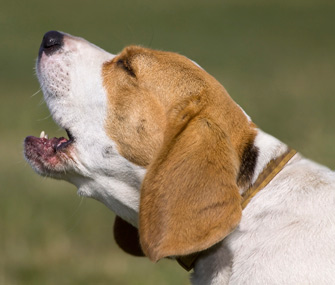Help! My Dog Barks at Everything
Published on November 05, 2012
Skip To

Q. My dog barks at anything and everything when we’re out on walks. He’s friendly, but he gets so excited. What are some ways to keep him calm?
A. Walks are often the highlight of a dog’s day. But a dog can get so excited and worked up about his walk that he becomes almost uncontrollable, forgetting about the person attached to the other end of the leash as he pulls and strains forward. When a dog gets especially worked up, he can start barking in excitement. This can look threatening to an outsider and gives the handler a sense of being out of control. A few simple changes in the way you conduct walks can make a major difference in the way your dog behaves.Why Your Dog Barks
Barking can be a symptom of a deeper issue. Sometimes a dog on leash will feel threatened because he can’t get away from whatever it is that is upsetting him; this dog barks as a way to warn others away and protect himself. Assess whether there is any fear or anxiety underlying your pooch’s vocalizations, such as fear of people or other dogs. If you suspect that this is the case, contact your veterinarian; she can address the problem and refer you to a veterinary behaviorist or certified professional dog trainer if needed.Many dogs who are friendly and relaxed when they are off leash are more likely to react to other dogs, people or unfamiliar sights while on leash because they are frustrated by their inability to get close to the object of interest. Your dog may continue to bark until he is allowed to go up to the person or dog. This reinforces his barking and makes it more likely to occur in the future.
Some dogs may bark because it guarantees attention from you. In this situation, your dog may bark because it works to get you to react — by picking him up, for example, or petting him. Scolding him or yelling at him is also a reaction, and can seem to your dog like you’re barking right along with him.
Use the Right Gear and the Right Commands
There are various ways you can make walks calmer, starting with the right walking equipment. For dogs who are more excitable and less mannerly on walks, a head halter or a front clip harness that hooks to the dog’s chest will provide more control during training.It’s also important that your dog has mastered a few basic commands before you head out on a walk. Teach your dog to heel on leash, walk on a loose leash and sit on command. Practice these behaviors in a calm environment, like your house or backyard, until your dog can perform them readily when asked.
Heeling is useful when you’re passing something your dog is especially excited about, such as another person or dog. Loose leash walking can be used during the times when there are fewer distractions; it allows for controlled sniffing and exploration, both of which are essential for your dog’s mental well-being. The automatic sit can be used to get your dog under control when you come across something that provokes a reaction. These behaviors give your dog something to focus on and to be rewarded for during his walk, which can replace his previous excitable walking and barking.
Stop Barking by Teaching Your Dog the Quiet Command
Your dog may sometimes bark because he wants to alert you to a change in the environment; this is a normal doggy behavior, and can be put under an owner’s control by teaching your dog to bark and be quiet on cue.Start by teaching speak. Say “speak,” and then one second later follow with something that will get your dog barking, such as knocking on the door, ringing the doorbell or using a squeaky toy. As soon as your dog barks, offer delightful praise and excitement, which often surprises dogs, especially if they’ve been punished for barking in the past. Keep pairing the “speak” with the bark eliciting stimulus until your dog begins to bark when he hears the command.
As soon as you have a bark, it’s time to teach the opposite. Ask your dog to speak, and then when he barks, say “quiet” and put a treat or toy in front of his nose. As soon as he is quiet, mark with a “good” or a click, and then give him the treat or toy. Once your dog learns the command and is quiet when asked, fade the lure.
When your dog has mastered speak and quiet, practice these commands in different areas of your home and yard; gradually bring the training outside on walks. When you first start, use rewards that are reinforcing to your pet, such as tasty treats. However, as training goes on, simply a “thank you” and praise can be enough for your pet to be quiet when asked, especially when used in combination with the training behaviors of heel, walking on a loose leash and automatic sits.
These training tips will help you and your dog experience less stress at walk time and will allow you both to enjoy exploring your neighborhood together.





